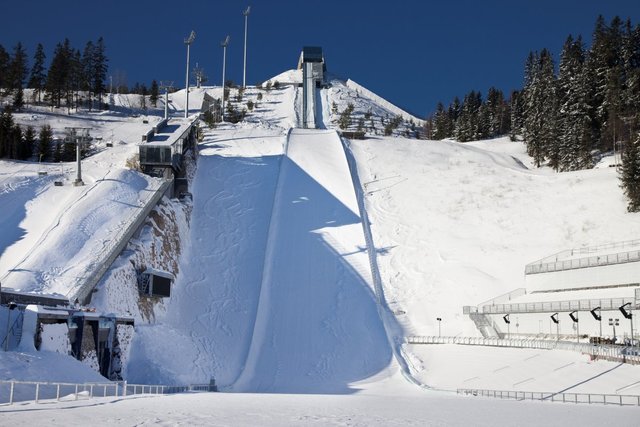According to Woody in Toy Story 3, that was not Buzz Lightyear flying when he told him that. "That was falling with style," he says after gliding around the room. Since ancient times, the concept of being able to fly has piqued the interest of various cultures. Stories about men making bird-like wings from wood, feathers, and cloth and then leaping from hills or cliffs date all the way back to Ancient Greece and Europe in the 18th century. Men and women who participate in ski jumping carry on the millennia-old tradition of falling gracefully as they soar through the air.
Ski jumping's goal is to land as far down the mountain as possible, but as Woody pointed out, it's not just a matter of flying as far as possible. In addition to substance, fashion plays a significant role. In relation to the Kline, ski jumpers are assessed based on their style and distance. The word "kritisch" means critical in German, hence the name "Kline." For each meter below the Kline, points are deducted, and for each meter above the line, points are added. This year's Olympic hills are K98, with the Kline located 98 meters from the end of each jump. It's a K125, which means it has a Kline of about 125 meters. As a result, ski jumpers will have to rely on physics to help them reach the K point or beyond.

Each section of ski jumping has a different set of physics that ski jumpers must master. The in-run, also known as the ramp, is the first step. On top of the ramp, ski jumpers set up shop on a metal bar, which they use as a starting point. They've reached the point where they're relying on gravitational potential energy theory. An object's potential energy increases linearly with height. Ski jumpers transform their potential energy into kinetic energy by skiing down the ramp. Prior to takeoff, the aircraft must gain speed and momentum by reducing air and snow resistance.
Other important links:
Football | Soft Tennis | Softball | Sorro Wrestling | Speed Skating | Speed Skiing | Sport Climbing | Sport Diving | Sprint | Squash
Ski jumpers use a variety of techniques to reduce the amount of resistance they encounter as they descend the ramp. The first consideration is one's physical posture. To reduce drag, they crouch with their knees bent, reducing the area of their body that comes into contact with the air. Additionally, ski jumpers keep a streamlined appearance by donning a sleek helmet, suit, and keeping their arms behind their backs while jumping.
Friction on the bottom of the skis is another issue for ski jumpers in addition to the air resistance. Skis have a plastic-like material for the soles. A thin layer of hot wax is applied to the plastic and then scraped away to make it as smooth as possible. To maintain a 20-mm-thick ice layer for the jumpers, modern ski jump in-runs feature ceramic tracks with an integrated cooling system. However, different waxes are required depending on snow and temperature conditions to reduce friction. Ski wax comes in many varieties depending on the season and the temperature outside. Ski jumpers can reach speeds of 90 km/hr (56 mph) at takeoff if they minimize friction and air resistance on the 35-degree ramp.
The table, or takeoff, is the next phase of ski jumping. The ramp's end does not rise as you might expect. The slope of the ski jump is approximately 10.5 degrees. As a result, ski jumpers extend from their aerodynamic crouch and jump instead of sliding off the end of the ramp in order to maximize the distance flown. On takeoff, timing, strength, and body position are all critical for a successful jump.
Flight is the final and most recognizable part of ski jumping. Flying like a glider without an engine, ski jumpers use the same principles as a glider when they jump. Ski jumpers must use the momentum they build on the ramp and aerodynamic forces to fly. While in flight, they have three main forces acting on them: lift, drag, and weight. The lift is orthogonal to the airflow. Lift pushes ski jumpers into the air and allows them to soar further down the hill as the air hits them horizontally in the face. While ski jumpers attempt to reduce the amount of body surface area that hits the air during the ramp section, during the flight section they aim to push against the air with their flat bodies and skis.
More important sports:
Football | Soft Tennis | Softball | Sorro Wrestling | Speed Skating | Speed Skiing | Sport Climbing | Sport Diving | Sprint | Squash
For more,you can visit this community
JOIN WITH US ON DISCORD SERVER:
Downvoting a post can decrease pending rewards and make it less visible. Common reasons:
Submit